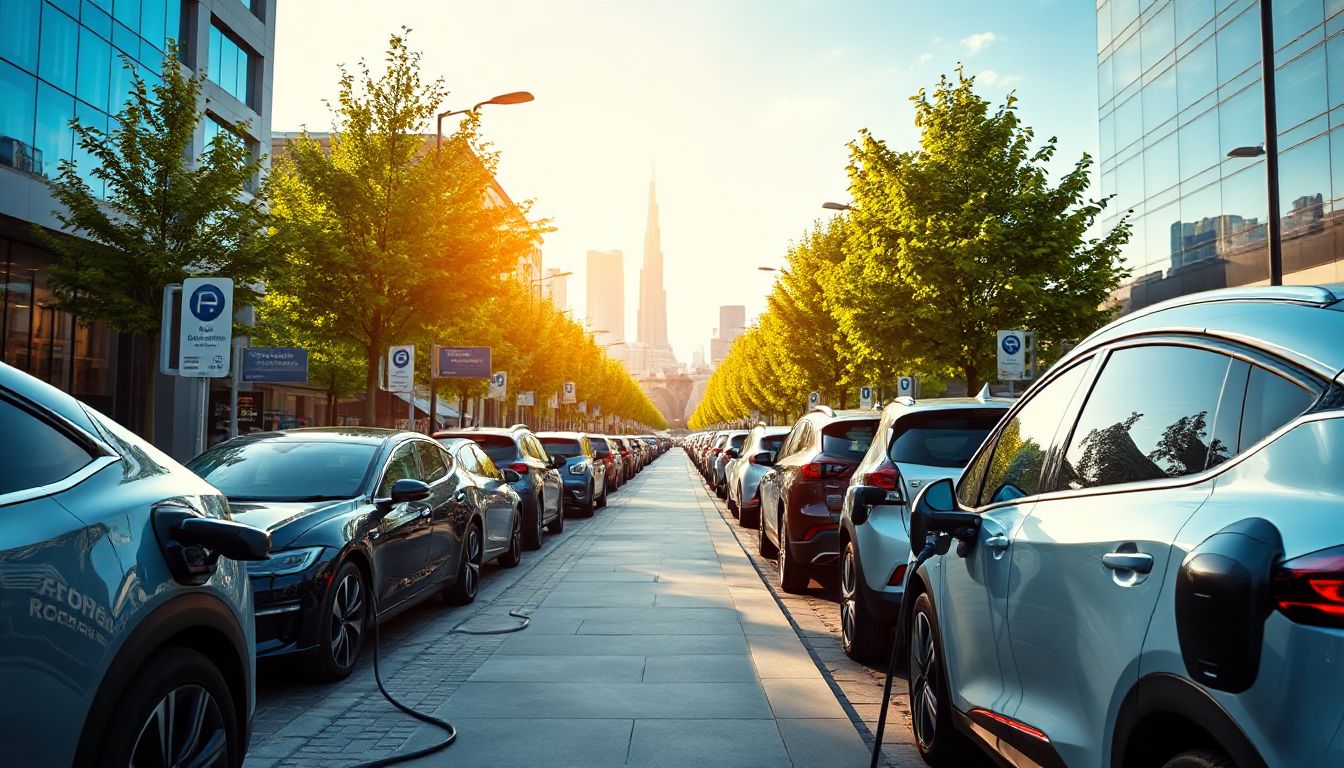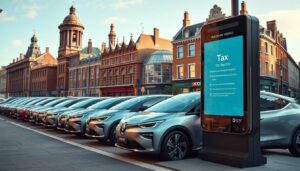Introduction
Britain is witnessing a big shift in how people get around. Electric vehicle (EV) sales are surging across the UK, changing the way we think about transportation. Why is this happening? It’s because the government, carmakers, and drivers are all pushing for cleaner, greener driving options. With climate goals and stricter rules coming into play, understanding UK EV sales trends can help everyone—shoppers, policymakers, and industry leaders—stay ahead of this fast-moving change. As the world aims to cut carbon emissions, the UK’s electric vehicle market is racing toward a brighter, cleaner future.
UK Electric Vehicle Market Overview
Market Size and Growth Trajectory
The UK EV market is growing fast. Last year alone, electric car registrations hit over 330,000, a jump of more than 40% from the year before. Since 2011, when the first modern EVs showed up on UK roads, the number has exploded. The share of EVs in total vehicle sales keeps climbing, now making up roughly 15% of all new cars sold. Major milestones include the UK government’s target to end new petrol and diesel car sales by 2030, a move that pushes EV adoption into overdrive. This rapid growth reflects a shift in consumer choices and advancements in EV technology.
Regulatory Environment and Policy Drivers
Government policies play a big role in boosting EV sales. The UK plans to ban the sale of new petrol and diesel cars by 2030. They also offer grants, reduced taxes, and incentives to make buying EVs easier. These measures have encouraged more drivers to make the switch. Plus, upcoming rules set clear deadlines, pushing carmakers to release more electric models. As policies tighten, the car industry is racing to meet the challenge, making EVs more appealing and accessible.
Consumer Adoption Trends
EV buyers in the UK come from all walks of life. More women and younger people are choosing electric vehicles. Cost is a big factor—many see EVs as cheaper to run long-term, even if the initial price is higher. Environmental concerns also influence decisions, with many wanting to reduce their carbon footprint. These days, leasing vs. buying is a hot topic—many prefer leasing because of lower upfront costs and updates to newer models. The trend shows that EVs are no longer just early adopters; they are becoming mainstream choices.
Key Factors Driving Electric Vehicle Sales in the UK
Government Policies and Incentives
Government programs are crucial in speeding up EV adoption. Grants like the Plug-in Car Grant reduce the price of EVs by thousands. Tax benefits, free parking, and subsidies for installing home chargers add more value. These policies have made electric cars more affordable and attractive, especially for first-time buyers. When financial incentives are clear, more people are willing to make the switch.
Expansion of Charging Infrastructure
Having enough charging stations is key. The UK is building more public chargers every year—fast chargers that can juice up a car in about 30 minutes are becoming common. Places like BP Pulse and Ionity are expanding networks across cities and highways. When drivers see convenient charging options, confidence grows. No one wants to get stuck with a dead battery. Better infrastructure means more people will consider EVs as their daily rides.
Advances in EV Technology
Battery range keeps getting better. Now, many EVs can travel 200 to 300 miles on a single charge. Prices are dropping too, making EVs comparable in cost to traditional cars. More models with different features are hitting the market, giving buyers more choices. From compact city cars to family SUVs, automakers are rolling out options that fit various needs. These improvements make EVs more practical, reliable, and appealing.
Market Entry of Major Automotive Brands
Big car brands are entering the electric scene. Tesla is still the top seller, but Nissan, VW, Kia, and others are making their mark. They are launching new models tailored to UK drivers, with better range, features, and prices. Also, some brands offer incentives like free charging or warranties. Competition is fierce, and this push for affordable, feature-packed EVs is boosting sales like never before.
Challenges and Barriers to EV Adoption in the UK
Charging Infrastructure Limitations
Despite progress, charging stations are unevenly spread. Rural areas have fewer chargers, which makes some drivers hesitant. Fast chargers can take time to install and sometimes aren’t reliable. If a driver can’t find a nearby charger or faces long wait times, it slows down EV adoption. Improving coverage and speed is essential to remove these barriers.
Cost and Affordability
EVs still cost more upfront than traditional cars. While running costs are lower, fewer people can pay the initial price. Long-term savings on fuel and maintenance help, but the initial expense can be a hurdle. As battery prices drop, EVs will become more affordable for everyone.
Consumer Awareness and Perception
Many people still have misconceptions about EVs. Some think they don’t go far enough or are unreliable. Others worry about battery life or lack of service centers. Educating consumers about the benefits and dispelling myths is critical. Trust in EV technology is growing, but more efforts are needed to inform the public.
Supply Chain and Production Constraints
Global shortages, especially of semiconductors and batteries, slow down EV production. Delays in getting parts can lead to long waiting times for new vehicles. This supply chain issue makes it harder for buyers to get their hands on the latest models. Overcoming these constraints is vital for future growth.
Future Outlook for Electric Vehicle Sales in the UK
Market Projections and Forecasts
Experts expect EV sales in the UK to keep climbing fast. By 2030, EVs could represent over 60% of new car registrations. The market share of electric vehicles will grow as more options become cheaper and better. Some studies predict up to 8 million EVs on UK roads by 2030, replacing many traditional cars.
Policy and Technological Innovations
Future policies are likely to include stricter emissions rules and more incentives. Expect the government to introduce grants for commercial EVs and bigger subsidies for fleet conversions. On the tech side, emerging innovations like solid-state batteries and vehicle-to-grid systems could revolutionize charging and range. These breakthroughs will make EVs even easier and cheaper to use.
Key Opportunities and Risks
The commercial and fleet sectors represent big opportunities. Companies are eager to electrify delivery vans and taxis. But risks remain. Economic shifts, supply chain challenges, and potential policy changes could slow growth. Staying flexible and innovative will be key for industry players.
Conclusion
Electric vehicles are rapidly transforming the UK’s roads. From soaring sales to better technology and infrastructure, EVs are becoming the norm. Supportive policies and ongoing innovations will keep this momentum alive. For consumers, this means more choices at better prices. For industry leaders, new opportunities will keep emerging. The UK is on track to cut emissions and build a low-carbon transportation future. This shift isn’t just about cars; it’s about creating a cleaner, healthier planet for all of us.




